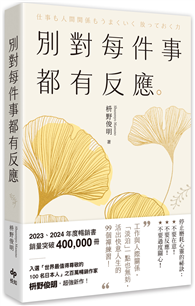| FindBook |
有 1 項符合
Analysis and Application of Analog Electronic Circuits to Biomedical Instrumentation的圖書 |
 |
Analysis and Application of Analog Electronic Circuits to Biomedical Instrumentation 作者:Northrop,Robert B. 出版社:Taylor & Francis 出版日期:2012-03-02 語言:英文 規格:18.4 x 26 x 3.2 cm / 普通級/ 雙色印刷 / 再版 |
| 圖書館借閱 |
| 國家圖書館 | 全國圖書書目資訊網 | 國立公共資訊圖書館 | 電子書服務平台 | MetaCat 跨館整合查詢 |
| 臺北市立圖書館 | 新北市立圖書館 | 基隆市公共圖書館 | 桃園市立圖書館 | 新竹縣公共圖書館 |
| 苗栗縣立圖書館 | 臺中市立圖書館 | 彰化縣公共圖書館 | 南投縣文化局 | 雲林縣公共圖書館 |
| 嘉義縣圖書館 | 臺南市立圖書館 | 高雄市立圖書館 | 屏東縣公共圖書館 | 宜蘭縣公共圖書館 |
| 花蓮縣文化局 | 臺東縣文化處 |
|
|
圖書介紹 - 資料來源:博客來 評分:
圖書名稱:Analysis and Application of Analog Electronic Circuits to Biomedical Instrumentation
內容簡介
"This text is intended for use in a classroom course on Analysis and Application of Analog Electronic Circuits to Biomedical Instrumentation taken by junior or senior undergraduate students specializing in Biomedical Engineering. It focuses on the electronic components and subsystems that makeup the diverse instruments that are used in biomedical instrumentation. It will also serve as a reference book for biophysics and medical students interested in the topics. Readers are assumed to have had introductory, core courses up to the junior level in engineering mathematics, including complex algebra, calculus, and introductory differential equations. They also should have taken a college physics course containing electricity and magnetism. As the result of taking these courses, readers should be familiar with systems block diagrams, the concepts of frequency response and transfer functions, and should be able to solve simple, linear, ordinary differential equations, and do basic manipulations in linear algebra. It is also important to have an understanding of the working principles of the various basic solid-state devices (diodes, bipolar junction transistors, and fieldeffect transistors) used in electronic circuits with biomedical applications. Rationale The interdisciplinary field of Biomedical Engineering is demanding in that it requires its followers to know and master not only certain engineering skills (electronics, materials, mechanical, and photonic) but also a diversity of material in the biologicalsciences (anatomy, biochemistry, molecular biology, genomics, physiology, etc.)"--Provided by publisher.
|










